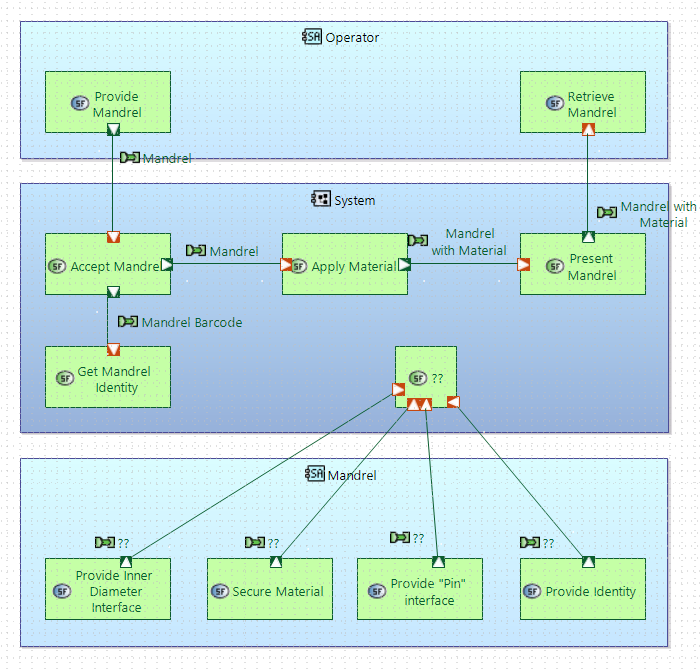Hey everyone! I’m new to Capella, the ARCADIA, and the community. I’m a big fan of the method and tool so far and am excited to learn more about it.
I’m currently struggling to figure out how to model (or if I should model) tooling as a system that interfaces with manufacturing machines that I am designing.
Example Scenario
I have a mandrel. It’s basically just a metal tube with features that serve different purposes. These features influence the machine design. The mandrel typically needs to be provided to the system for processing by an operator. Some examples of features…
- Outer Diameter, this provides an interface for creation of the inner diameter of the product when we wrap something around it and set its shape.
- Fastener, this provides means of fixing material to the mandrel for processing
- Barcode, this provides the identity of the tool that can be scanned
I’m wondering the best way to show this in an operational or system analysis, whether that’s through interfaces with the mandrel as a system, or if it’s just requirements allocation / exchanges? There will actually be many machines that need to interface with this mandrel, so my instinct is to create a library for the mandrel and create REC’s to leverage in many machine systems to inform requirements/needs of the machine systems (see the system actor below the system). However, this gets weird because I have a functional exchange with the operator for the mandrel entering and leaving the system.
I’m hoping someone here can offer some experience that might help me find a path forward. Thanks in advance!
